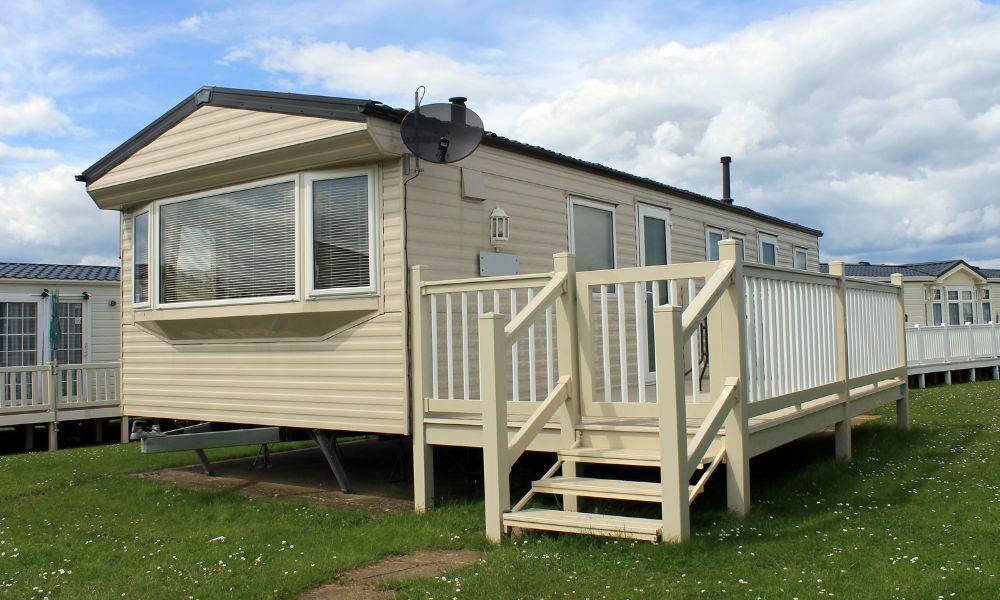The Evolution of RV and Mobile Home Building Materials
Recreational vehicles and mobile homes have evolved significantly over the past few decades, and a major factor in this transformation is the materials used in their construction. Traditional building materials once dominated the industry, focusing on durability and basic functionality. Wood framing, aluminum siding, and fiberglass panels were commonly used, providing a solid structure and relatively simple maintenance. While these materials served their purpose well, advances in technology and changes in consumer expectations have led to the emergence of modern RV and mobile home building materials that offer enhanced performance, energy efficiency, and aesthetic appeal.
The shift from traditional to modern materials reflects both technological progress and evolving lifestyles. Modern RV and mobile home building materials emphasize lightweight construction, resistance to weather and wear, and improved insulation for comfort in all seasons. These materials are often designed to reduce overall vehicle weight, which can improve fuel efficiency and make towing or driving easier. Additionally, modern materials can enhance the visual appeal of RVs and mobile homes, offering sleek finishes, vibrant colors, and long-lasting durability.
Traditional Building Materials for RVs and Mobile Homes
Traditional RV and mobile home building materials include wood, steel, and aluminum. Wood has been a staple in construction for its versatility and ease of use. It can be cut and shaped to fit various designs and provides natural insulation. However, wood is prone to rot, termite damage, and water-related issues, requiring careful maintenance and protection. Steel frames add strength and stability but can be heavy, making the RV or mobile home more difficult to transport and reducing fuel efficiency. Aluminum siding is lightweight, corrosion-resistant, and relatively easy to repair, which contributed to its widespread use in older models.
Fiberglass was another common traditional material, often used for exterior panels and roofing. Fiberglass offered weather resistance and a smooth surface for painting, but it could be prone to cracking under impact or extreme temperature changes. Interior materials traditionally included plywood, particleboard, and laminate for cabinetry and flooring. These materials were functional and cost-effective but could be vulnerable to water damage and wear over time.
The appeal of traditional materials lies in their familiarity and ease of repair. Many owners of older RVs and mobile homes appreciate the simplicity of working with these materials, as replacement parts are widely available and do not require specialized tools. However, as the demand for lighter, more durable, and energy-efficient solutions grows, traditional materials are gradually being supplemented or replaced by modern alternatives.
Modern Building Materials and Their Advantages
Modern RV and mobile home building materials focus on enhancing durability, reducing weight, and improving energy efficiency. Composite panels, aluminum alloys, and advanced polymers have become increasingly popular in construction. These materials are designed to withstand the stresses of travel, resist corrosion, and maintain structural integrity under various weather conditions. For instance, composite panels often feature layers of insulation, reinforcing materials, and exterior finishes that provide excellent thermal performance and reduce the need for heavy interior walls.
Lightweight materials, such as aluminum framing combined with composite panels, reduce the overall weight of the vehicle or home without compromising strength. This has a direct impact on fuel consumption and ease of handling. Modern roofing materials, including synthetic membranes and reinforced fiberglass, provide enhanced resistance to hail, UV damage, and water infiltration. These innovations contribute to longer-lasting performance and reduced maintenance requirements.
Modern interiors also reflect the advantages of advanced building materials. Engineered wood, high-pressure laminates, and durable plastics replace traditional plywood and particleboard, offering better resistance to moisture, scratches, and impact. Flooring materials like vinyl and composite tiles are lightweight, easy to clean, and capable of withstanding heavy use, making them ideal for mobile living spaces. Additionally, modern materials allow for more design flexibility, enabling manufacturers to create contemporary layouts, integrated storage solutions, and visually appealing finishes.
Comparing Performance, Cost, and Longevity
When comparing traditional versus modern RV and mobile home building materials, performance, cost, and longevity are key considerations. Traditional materials often offer lower upfront costs and straightforward repair options, but they may require more maintenance over time and can be susceptible to damage from moisture, pests, and travel wear. Modern materials, while sometimes more expensive initially, provide long-term benefits such as increased durability, improved energy efficiency, and reduced maintenance needs.
Weight is another important factor. Heavier traditional materials can increase fuel consumption and limit the maximum payload of the RV or mobile home. Modern lightweight materials reduce these issues, making the vehicle easier to drive and more economical to operate. Energy efficiency is also enhanced with modern materials, which often include integrated insulation and reflective coatings to maintain comfortable indoor temperatures in various climates.
Both traditional and modern materials have their place depending on the needs of the owner. Some prefer the classic feel and repair simplicity of traditional materials, especially in custom or older RVs. Others prioritize performance, aesthetics, and low maintenance, making modern materials the preferred choice for new construction. Understanding the differences helps buyers and builders make informed decisions that align with lifestyle, budget, and long-term expectations.
Making the Right Choice for Your RV or Mobile Home
Selecting the right materials for an RV or mobile home requires balancing cost, durability, and functionality. Builders and owners should consider factors such as climate, frequency of travel, desired aesthetics, and maintenance capabilities. For those who plan frequent long-distance travel, modern materials may offer advantages in weight, efficiency, and resilience. For stationary mobile homes or vintage RV restorations, traditional materials might provide the necessary charm and ease of repair.
Ultimately, the choice between traditional and modern RV and mobile home building materials reflects individual priorities. Modern materials provide innovation, longevity, and reduced maintenance, while traditional materials offer reliability, affordability, and familiarity. By understanding the properties, benefits, and limitations of each, owners and builders can make informed decisions that ensure their recreational vehicle or mobile home meets their expectations for comfort, performance, and durability.





